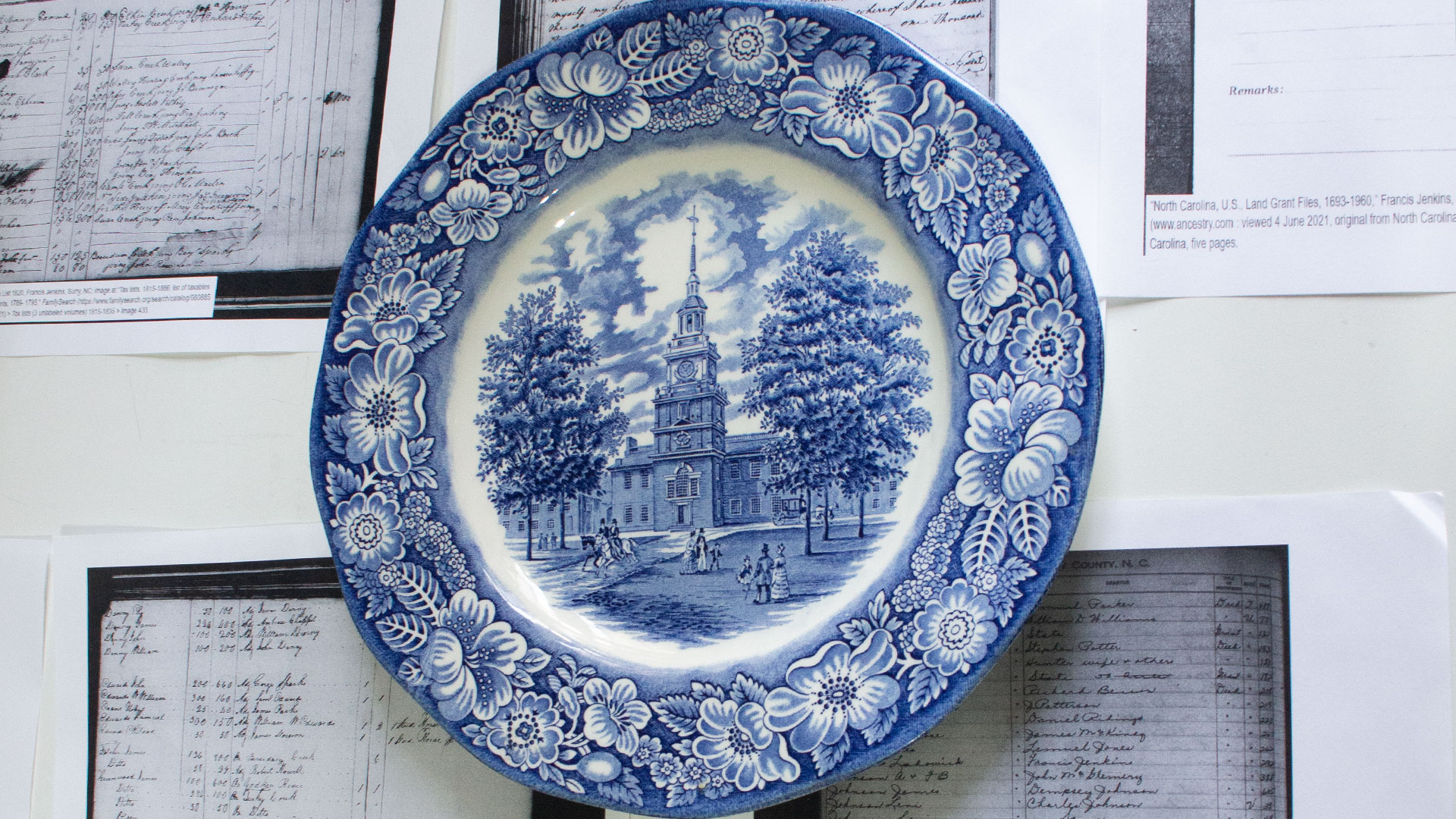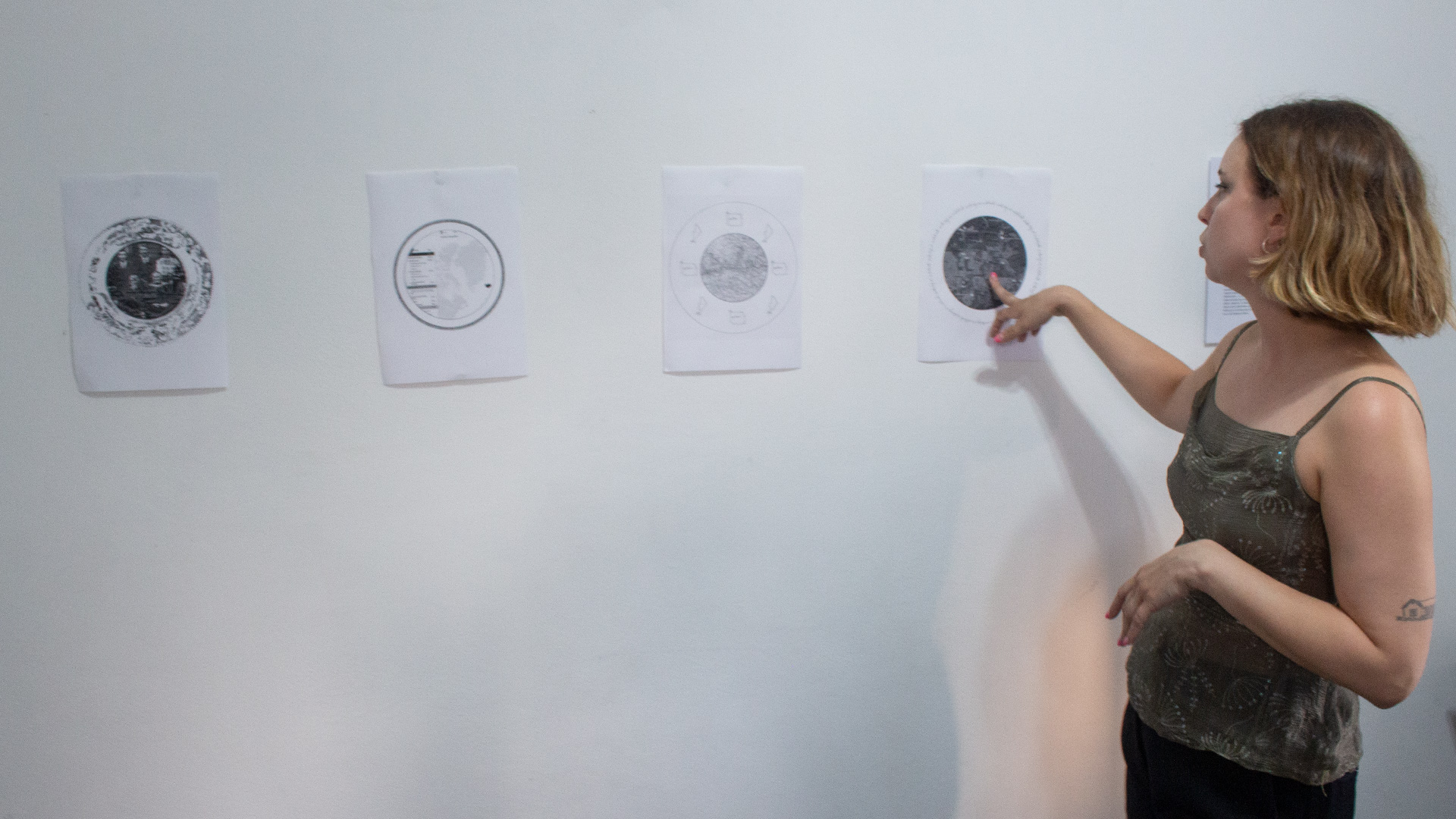Activities
Exhibitions
Who was Loderick Jenkins?
Amy Stoker
01.03.23 01.03.23
What is seen presented is the visual research Amy Stoker has been working in her residency at ´ace. She developed a narrative that reflects the struggle of generational unknowing and loss. With the help of a genealogist, she has acquired records including censuses, land deeds, vintage and modern maps, and photographs to depict the family history that went missing over the years.
In the presence of whiteness there is absence. Absence of culture, traditions, identities. People cling to their objects to define themselves. Their material culture speaks to their values. In the American South, Staffordshire pottery or blue transferware represents one of the many collectibles families display that alludes to wealth, status, and ultimately, whiteness. A number of design tests have been displayed to be printed on ceramic plates in an installation that uses the artist’s family history to illustrate the complexities of race and identity in the American South.
¨I try to imagine Lodwick/Loderick/Lodweek/Lodowick Jenkins rising every morning at dawn to tend the land his father, Francis, bequeathed in 1830s Yadkin County, North Carolina. The 158 acres, located off of Peach Bottom Creek, which no longer exists on modern maps, was demarcated by a black oak. The sole marker of the property line is perhaps where Loderick took his lunch to escape the harsh afternoon sun. I try to imagine his features from the photograph of his mother, Susannah Morrison, the only photograph I possess of the family. The U.S. censuses of 1830 and 1860 lists Loderick and members of his household as “mulatto” and “free persons of color”. On others, he is listed as “white”. Perhaps this could account for the fractional percentage of West African DNA that registered on my 23 & Me profile several years ago amidst the growing popularity of DNA testing. ¨ – Amy Stoker-




